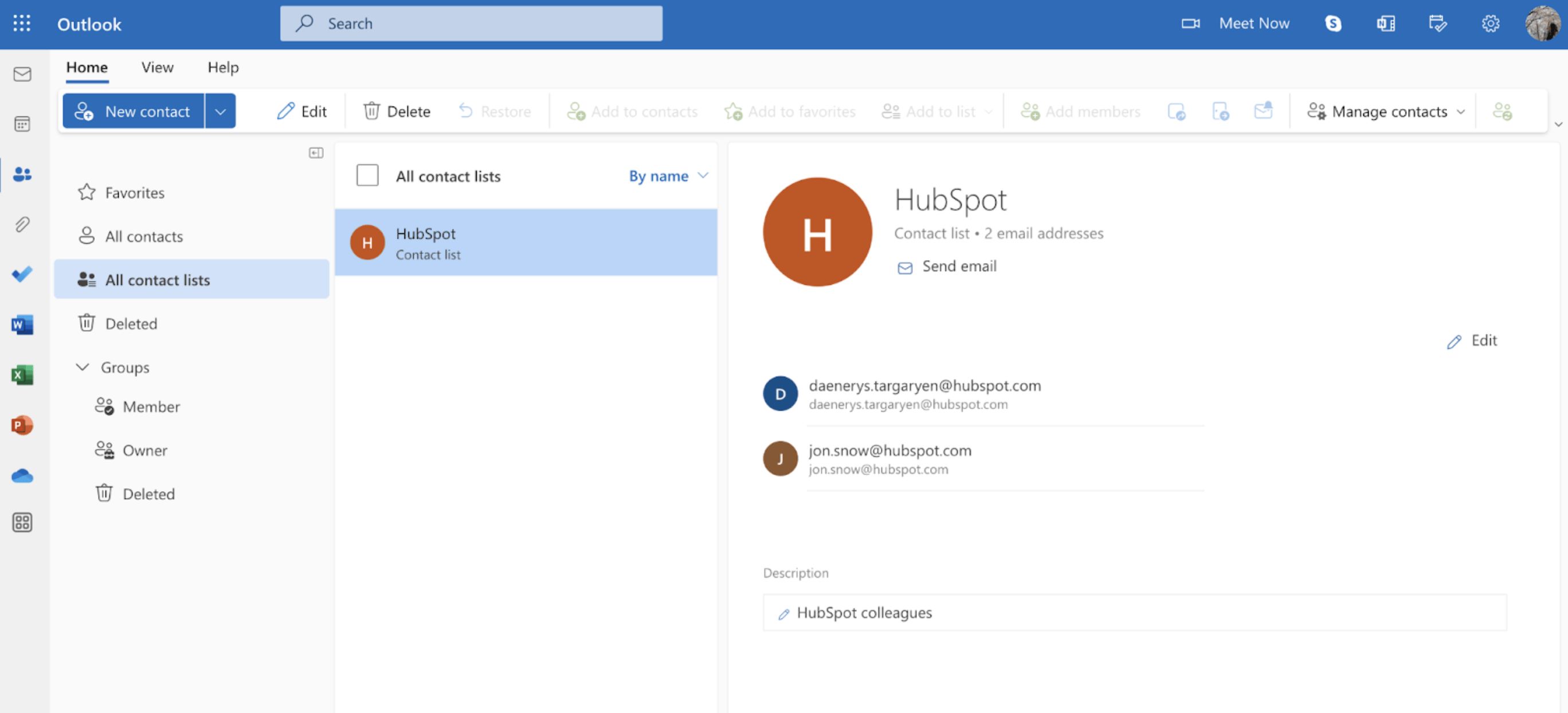Introduction
Email has become an integral part of our personal and professional lives. It is not just a means of communication but also a representation of our identity. Your email name, also known as the display name, is the name that appears in the recipients’ inbox when they receive an email from you. It is important to have an email name that accurately reflects your personal or business brand.
But what if you’ve outgrown your current email name or simply want to change it for personal reasons? Thankfully, changing your email name is a relatively straightforward process. In this article, we will guide you through the steps to change your email name and ensure a smooth transition.
We will cover everything from checking if you can change your email name to updating your email display name, backing up your emails and contacts, informing your contacts about the change, updating your email signature, and even making changes to your social media and online profiles. By the end of this article, you will have all the information you need to successfully change your email name.
So, if you’re ready to give your email a fresh new look and make it more reflective of who you are or what your business represents, let’s dive into the step-by-step process of changing your email name.
Why Change Your Email Name?
Your email name is a significant part of your online identity. It is the first thing people see when they receive an email from you, and it can leave a lasting impression. Here are a few reasons why you might consider changing your email name:
- Personal Branding: If you are using your email for professional purposes, having a personalized email name can help promote your personal brand. It allows you to present yourself in a more professional manner and establish credibility.
- Business Rebranding: If you are a business owner or working for a company, changing your email name can be essential during a rebranding phase. It allows your email address to align with your new brand identity and ensures consistency across all communication channels.
- Outgrowing Your Current Name: Sometimes, we may outgrow our current email name, whether it’s an outdated nickname or a generic username. Changing your email name can give you a fresh start and help you project a more mature or professional image.
- Privacy Concerns: If you’ve been using an email name that reveals too much personal information, such as your full name or birthdate, changing your email name can enhance your privacy and protect your identity from potential online threats.
- Personal Preference: Ultimately, changing your email name can simply be a matter of personal preference. Whether you want to add a middle name, initials, or a more unique identifier, changing your email name allows you to personalize your online presence.
Keep in mind that changing your email name may require some effort to update your contacts, email signature, and online profiles. However, the benefits of a new and improved email name outweigh the minor inconveniences.
Now that you understand why changing your email name can be beneficial, let’s proceed to the step-by-step process of actually making this change.
Step 1: Check if You Can Change Your Email Name
Before diving into the process of changing your email name, it’s crucial to ensure that the email service provider you’re using allows such modifications. While most popular email providers allow users to change their email name, it’s still a good idea to verify the availability of this feature.
Here are the steps to check if you can change your email name:
- Login to Your Email Account: Open your web browser and navigate to the login page of your email service provider. Enter your credentials to access your email account.
- Visit Account Settings: Once you’re logged in, locate the “Account Settings” or “Settings” option in your email account. It is usually found in the top-right corner of the interface.
- Look for Personal Information or Profile: In the Account Settings or Settings menu, search for options related to personal information or profile settings. Different email service providers may label these options differently, but their purpose is to manage your account details.
- Check for the Email Name Change Option: Within the Personal Information or Profile settings, look for an option that allows you to change your email name. It may be labeled as “Display Name,” “Sender Name,” or something similar. If you find this option, you can proceed with the name change process. If not, it means that your email service provider does not provide the feature to change your email name.
If you discover that your email service provider does not offer the capability to change your email name, you may need to consider creating a new email account with a different name. This option may involve migrating your emails, contacts, and informing your contacts about the change.
Once you confirm that you can change your email name, you’re ready to move on to the next step: backing up your emails and contacts to ensure a smooth transition.
Step 2: Backup Your Emails and Contacts
Before proceeding with any changes to your email account, it is crucial to backup your emails and contacts to avoid any potential loss of important information. By creating a backup, you can have peace of mind knowing that your data is safe and can be easily restored if needed.
Here’s how you can backup your emails and contacts:
- Email Backup: Most email service providers offer the option to export or backup your emails. Login to your email account, navigate to the settings or options menu, and look for a section related to backup or export. Follow the instructions provided by your email service provider to create a backup file of your emails. Save the backup file to a secure location on your computer or cloud storage.
- Contact Backup: Exporting your contacts is typically a built-in feature of email services. Locate the contacts or address book section in your email account settings. Look for an option that allows you to export or backup your contacts. Choose the desired format for your backup (such as CSV or VCF) and save the file to a secure location.
By backing up your emails and contacts, you can ensure that even if something goes wrong during the email name change process, you won’t lose any vital information.
Once you have successfully created backups of your emails and contacts, you are ready to move forward and change your email display name. This will be covered in the next step.
Step 3: Update Your Email Display Name
Now that you’ve ensured the availability of the email name change feature and backed up your emails and contacts, it’s time to update your email display name. This is the name that will appear as the sender’s name when recipients receive emails from you.
Follow these steps to update your email display name:
- Login to Your Email Account: Access your email account using your credentials.
- Go to Account Settings: Look for the “Account Settings” or “Settings” option within your email interface.
- Find Personal Information/Profile: Locate the section or tab related to personal information or profile settings.
- Update Your Display Name: Look for the option to update your email display name. It may be labeled as “Display Name,” “Sender Name,” or similar. Enter the new name you would like to use as your email display name.
- Save Changes: After entering your new display name, make sure to save the changes. Some email service providers may require you to enter your account password or confirm the changes before they take effect.
Once you have updated your email display name, new emails you send will reflect the updated name in the recipients’ inbox. However, it’s important to note that this change will not affect the email addresses associated with your account. Your email address will remain the same, only the sender’s name will be updated.
Now that you’ve successfully updated your email display name, it’s important to inform your contacts about the change. They need to be aware of your new name to avoid any confusion. We will cover this crucial step in the next section.
Step 4: Inform Your Contacts
After updating your email display name, it’s essential to communicate the change to your contacts to ensure a seamless transition and avoid any confusion. Here are some steps to follow when informing your contacts about the update:
- Create an Announcement Email: Craft a concise and clear announcement email to inform your contacts about the change in your email name. Include the reason for the change, your new email display name, and the date from which the change will take effect.
- Address the Email Properly: Send the announcement email to your entire contact list or specific groups, depending on your preference. Ensure that the recipients’ names are correctly entered in the “To” field to personalize the communication.
- Explain the Reason for the Change: In the announcement email, provide a brief explanation of why you decided to change your email name. This will help your contacts understand and accept the change more easily.
- Include the New Email Display Name: Clearly state your new email display name in the announcement email. Bold or highlight it to ensure that recipients notice the change.
- Specify the Effective Date: Inform your contacts about the date from which the change will be implemented. This will give them a heads-up and allow them to update their contact records if necessary.
- Offer Assistance: Encourage your contacts to reach out if they have any questions or encounter issues with the transition. Provide them with alternative contact methods, such as a phone number or an alternative email address, if applicable.
- Follow Up: After sending the announcement email, keep an eye out for any responses or questions from your contacts. Address any concerns promptly to ensure a smooth transition.
Remember, it is crucial to be proactive in notifying your contacts to minimize any confusion or disruption in communication. By keeping your contacts informed about the change, you can ensure a seamless transition to your new email name.
In the next step, we will discuss how to update your email signature to reflect the change in your email name. This will help maintain consistency and professionalism in your email communications.
Step 5: Update Your Email Signature
Updating your email signature is an important step after changing your email name. Your email signature provides important contact information and helps establish a professional image. Here’s how to update your email signature:
- Access Your Email Settings: Login to your email account and navigate to your account settings or preferences.
- Locate Email Signature: Look for the option to edit or modify your email signature. This is typically found in the settings or personal information section.
- Edit Your Signature: In the signature editor, update the sender’s name to reflect your new email display name. You may also want to consider making any other necessary changes to your contact information, such as phone number, job title, or website.
- Customize the Design: Take the opportunity to review and customize the design of your email signature. Consider using a consistent font, colors, and formatting that align with your personal or business brand.
- Save Changes: After making the necessary updates to your email signature, save the changes. Some email service providers may require you to enable the signature for new emails or apply it to existing ones.
Updating your email signature will ensure that all future outgoing emails reflect your new email name and present a cohesive and professional image to your recipients. Remember to double-check your signature’s alignment, formatting, and any clickable links to ensure they are functioning correctly.
Once you have updated your email signature, it is essential to move on to the next step: updating your social media and online profiles. This will help maintain consistency across all your online platforms.
Step 6: Update Your Social Media and Online Profiles
Updating your social media and online profiles is a crucial step after changing your email name. This ensures that your new email name is reflected consistently across all your online platforms. Here’s what you need to do:
- Make a List of Profiles: Create a list of all your social media accounts and online profiles associated with your previous email name. This may include platforms such as Facebook, Twitter, LinkedIn, Instagram, and any other online platforms where you have a public presence.
- Login to Each Platform: Visit each social media platform or online profile and log in using your credentials.
- Update Profile Information: Navigate to the account settings or profile information section of each platform. Look for the option to edit your profile details.
- Modify Your Email Name: Update your email name to reflect the new name you have chosen. Also, take the opportunity to review and update any other relevant profile information, such as your bio, website URL, or contact information.
- Save Changes: After making the necessary updates, save the changes to your profile on each platform. Some platforms may require you to confirm the changes or take additional steps to ensure the updates are applied properly.
- Review Content and Media: While updating your profiles, take the time to review the content you have shared and any media associated with your previous email name. Update or remove any outdated or irrelevant content to align with your new email name and overall branding.
- Inform Your Network: Consider making a general announcement on your social media platforms informing your network about the change in your email name. This will help spread the word to a wider audience and ensure that your contacts are aware of the update.
By updating your social media and online profiles, you ensure consistency in your online presence and prevent any confusion among your connections. It also helps maintain a professional and cohesive brand across different platforms.
Once you have successfully updated your profiles, it’s time to move on to the final step: testing your new email name to ensure everything is working smoothly.
Step 7: Test Your New Email Name
The final step in the process of changing your email name is to test it to ensure that everything is functioning as expected. By testing your new email name, you can confirm that your emails are being sent and received correctly, and that your contacts are seeing your updated name. Here’s what you need to do:
- Send Test Emails: Compose a few test emails using your updated email display name. Send these emails to yourself as well as trusted contacts to verify that they are receiving the emails with the correct sender’s name.
- Check Incoming Emails: Ask your contacts to reply to the test emails you sent. Verify that their replies are correctly addressed to your new email display name and are being delivered to your inbox.
- Review Email Signature: Double-check your email signature to ensure that it is appearing correctly in the emails you send. Verify that all the contact information and links in your signature are accurate and functioning as intended.
- Test Attachments and Formatting: Attach files to your test emails and verify that the recipients can download and open them without any issues. Also, check that the formatting of your emails is preserved, including font styles, colors, and any HTML elements.
- Follow Up with Contacts: Reach out to some of your closest contacts or clients to inquire if they have noticed the change in your email name and if they have encountered any difficulties during the transition. Address any concerns they may have promptly.
- Monitor Your Inbox: After testing your new email name, keep a close eye on your inbox for any emails that may have been redirected or sent to your old email name. Make sure to update any contacts or systems that are still using your old email address.
By thoroughly testing your new email name, you can have confidence that the change has been successfully implemented. If any issues arise during testing, address them promptly to ensure a smooth and seamless transition.
With the completion of Step 7, you have successfully changed your email name and ensured that it is functioning correctly. Congratulations on completing the process!
Conclusion
Changing your email name can be a significant decision, whether it’s for personal branding or business rebranding purposes. By following the step-by-step process outlined in this article, you can successfully update your email name while maintaining a professional image across all platforms.
Remember to start by checking if your email service provider allows for changing the email name. Take the time to backup your emails and contacts to prevent any data loss. Update your email display name to reflect your new name, and inform your contacts about the change to avoid any confusion.
Additionally, don’t forget to update your email signature to maintain consistency in your communications. Update your social media and online profiles to align with your new email name, and finally, test your new email name to ensure a smooth transition.
Throughout this process, it is essential to be proactive, communicate clearly with your contacts, and address any concerns or questions promptly. By taking these steps, you can successfully change your email name and present yourself or your business in the best possible way.
Remember, changing your email name is just one step towards improving your online identity. Continuously evaluate and update your online presence to align with your personal or business goals. With a strong and consistent online brand, you can make a lasting impression and effectively communicate with others.

























